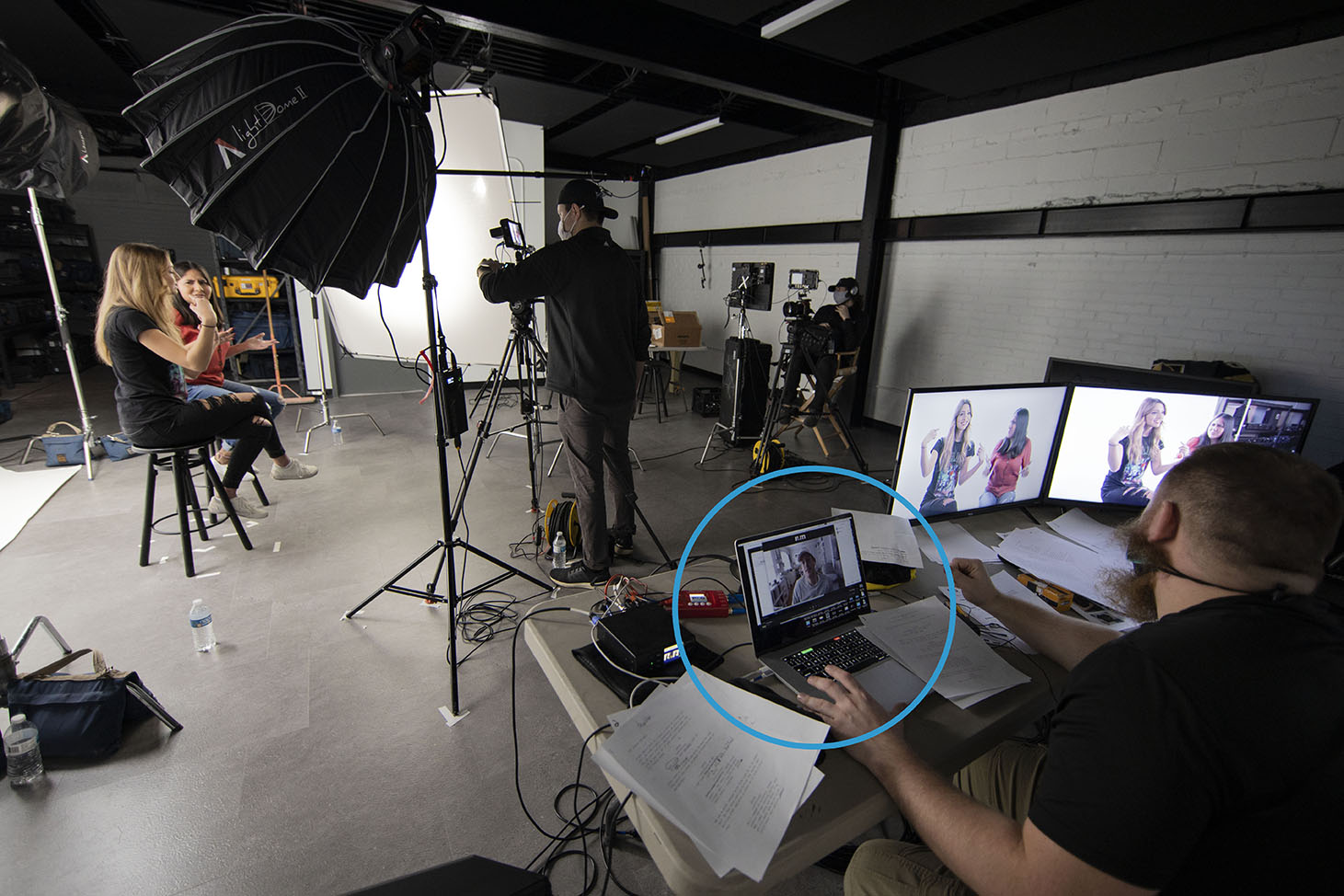Remote Client Communication: What Happens If You Can't Be On-Site
When it comes to the modern video process, we’re no longer tied to mentality that clients need to be on shoots in a video village on-set or watching from a conference room. Instead, we’ve got a number of tools to add flexibility and the ability to make the whole video process for client communications that make it much more mobile and everywhere-friendly. Here are some of our go-tos:
During the Shoot
Zoom with Remote Interfacing
Especially during the most intense parts the last year, we often got the requests from outside production companies for help with shoots or requests from clients who were unable to travel. No problem! They’d send us a script and/or shot list, and they wanted to watch the shoot remotely and provide live-time feedback if needed. To do this, our tool of choice was often a BlackMagic Design’s WebPresenter and a laptop running a Zoom call. With the WebPresenter, we could send either a single camera feed (with audio) or even use a multi-viewer in-line to show the client multiple cameras - even items like a confidence cam and a teleprompter feed straight from set - and the laptop would see that input as a simple webcam. That makes it easy to connect and share. Then we’d have the client mute their mic unless they had a comment and we’d pipe their audio from the call through a speaker or other output so everyone on-set could hear the comments and feedback straight from client.
 Behind-the-Scenes of a Studio Shoot with the Client Viewing Remotely from California
Behind-the-Scenes of a Studio Shoot with the Client Viewing Remotely from California
Overall, this makes for a great client experience, even from far away. They can even bring in multiple people for oversight at one time. Just add another Zoom member, and just like that, another person can contribute to the shoot, too.
During the Reviews/Edits
Google Docs
For us, nothing beats Google Docs for simultaneous collaboration on things like scripts, shot lists, narrative documents and more. Particularly when we were all working from home, this tool and software suite was vital to allow our team (as well as our clients) to see the editing process in real-time. The ability to leave comments and feedback was vital for efficient turnaround, and taking the “writer’s room” remote.
Frame.io
There’s probably no tool that we use more on a daily basis than Frame.io. This web service joins the likes of Wipster and Vimeo’s Review tools in offering internal and external users the ability to view and leave feedback on versions of graphics, storyboards, videos, you name it. Basically our clients get a Frame.io link, they put in their name (No profile or log-in required), and they can quickly start to leave messages, draw on the screen to point out issues and get responses from us directly. Fast, user-friendly, and ever-evolving, this tool is a must have for remote collaboration.
Zoom Editing Session
Sometimes, it's easiest to walk through changes live-time with a client and editor. Zoom again makes this kind of face-to-face interaction possible! Through the power of screen sharing and video chats, clients are able to sit with our team from anywhere in the world and look at projects, discuss edits and problem solve as they go. Not exactly like being in one of our editing suites, but the next best thing!




